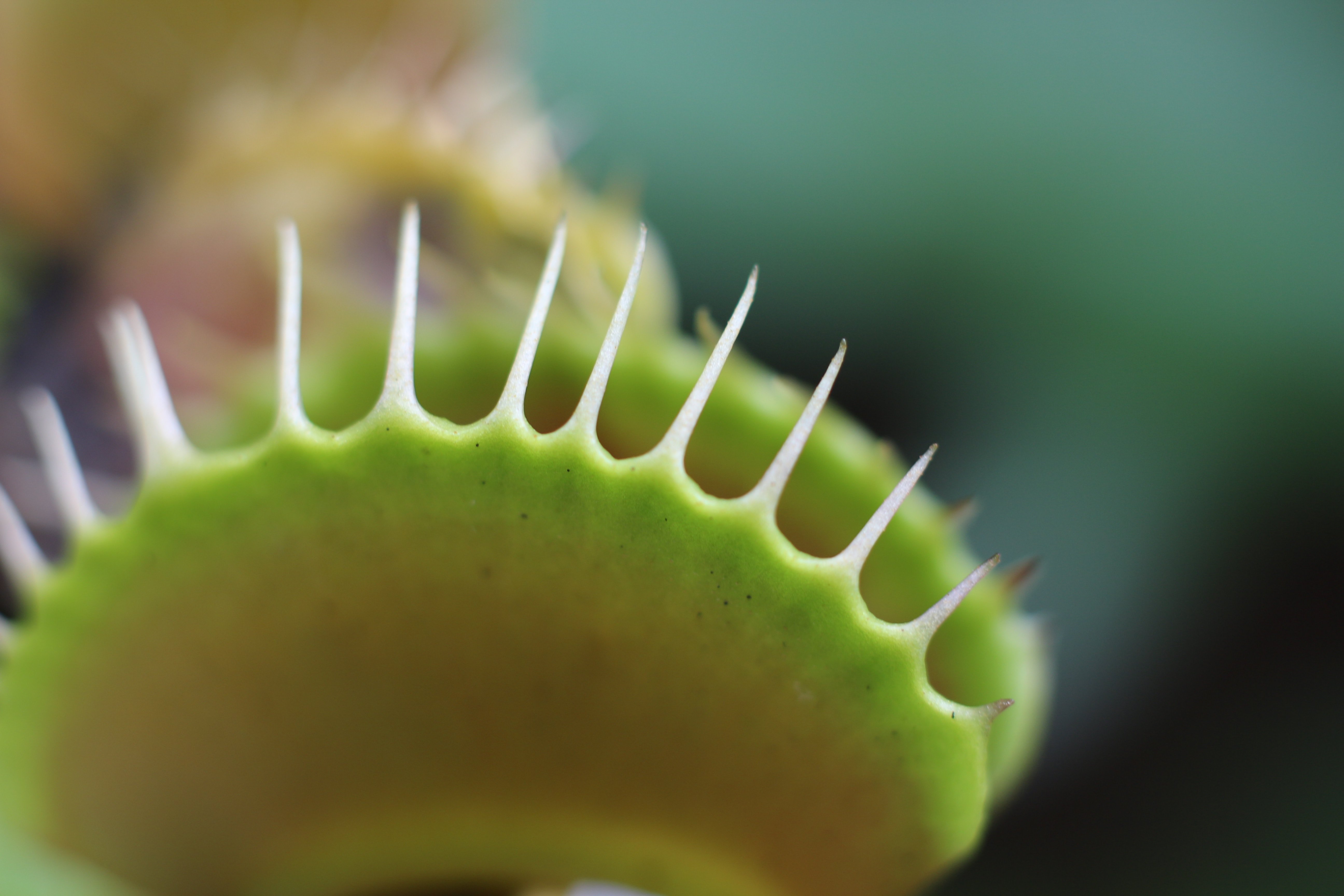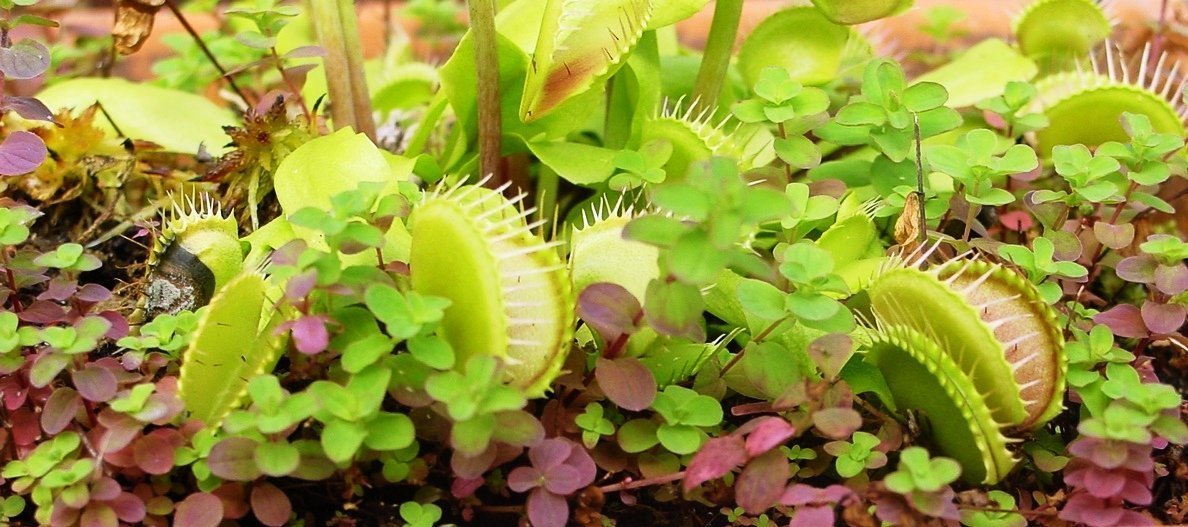Last updated on October 23rd, 2023 at 08:44 pm
Who does not know them! Venus flytrap is the most famous carnivorous plant in our country. It can be found in more and more homes and is cherished and cared for by plant lovers. In order for this extraordinary (indoor) plant to enjoy optimal growth, you should pay attention to a few things when caring for Venus flytraps. What exactly that is, we show you in our article.
Contents
- 1 The history of the Venus flytrap
- 2 Special features of the Venus flytrap
- 3 Proper Venus flytrap care: location, watering, repotting, etc.
- 4 Venus flytrap location: Sun please!
- 5 Venus flytrap soil: it should be lime-free
- 6 Watering Venus flytrap: Better from below than from above
- 7 Fertilize Venus flytrap: Rather low in nutrients
- 8 Pruning Venus flytrap correctly
- 9 Repotting Venus flytrap: At the end of the dormant period
- 10 Propagate Venus flytrap: This is how easy it is
- 11 Is the Venus flytrap poisonous?
- 12 Tips for problems with the Venus flytrap
- 13 Author
The history of the Venus flytrap
Dioneae muscipula actually sounds like a normal plant species. But the plant is known worldwide as a so-called carnivorous plant. Therefore, proper Venus flytrap care is also very important. Originally it grows only in a very small region in the USA and was first mentioned on April 2, 1759. In a letter to botanist Peter Collinson, the then governor of North Carolina, Arthur Dobbs, described the unique and unusual plant. Only ten years later they were also cultivated in Europe. The Latin name Dioneae muscipula was not chosen without reason, of course: It is derived from the words Dione=goddess, mother of Venus and muscipula=mousetrap.
Special features of the Venus flytrap
Since the Venus flytrap belongs to the carnivores (carnivorous plant) in the plant kingdom, it naturally feeds on small animals that get caught in its oval tentacles, which can be up to four centimeters in size. It is considered a survivor in the wild, having developed independent strategies for nutrient uptake not only from the soil but also from the air. As soon as an animal gets caught in its tentacles and touches the tiny feeler bristles several times within a few seconds, the hinged trap closes abruptly. The insect sitting in the trap is decomposed by the plant’s own digestive juices over the next few weeks. After that, the tentacles suddenly open and wait for a new supply.

Proper Venus flytrap care: location, watering, repotting, etc.
The Venus flytrap care includes some things that you should consider. What you have to do for a good location or an optimal water supply of your plant, you will learn here.
Venus flytrap location: Sun please!
The correct Venus flytrap care includes first and foremost the right location. The carnivorous plant loves sun and warmth (20 to 32 °C). Humidity should also be quite high, between 50 and 80 percent is perfect for them. You should avoid drafts. In your home, a window sill facing southwest or southeast will provide enough sun. Usually the Venus flytrap is hardy down to minus ten degrees Celsius, but it should not get colder. In the winter months, the plant is in its dormant phase and you are welcome to place it at a south window in a less or unheated room.
Tip: Exposure to sunlight will cause its catch leaves to turn slightly reddish. This is a sign that your plant is healthy.
Venus flytrap soil: it should be lime-free
Proper Venus flytrap care is also characterized by choosing the right substrate. The best substrate for your plant is one that is low in nutrients and also lime-free. For example, you can choose a mixture of sand and peat.
Tip: You can also buy special carnivore substrate that is free of lime, as the Venus flytrap is very sensitive to it.

Watering Venus flytrap: Better from below than from above
In order for your Venus flytrap to thrive properly, you must not forget to water it. If possible, you should always use rainwater or still mineral water. The plant does not tolerate conventional tap water well due to its high lime content. Your watering rhythm should be such that the soil is always slightly moist.
Tip: Place the flower pot in a saucer and pour the water into it (about two centimeters). This way the plant can perfectly absorb the water from below. If it has absorbed it completely with its roots, then wait about two days before you supply it with water again.
During its dormant period in the winter months, you should water it significantly less.
Fertilize Venus flytrap: Rather low in nutrients
Since the Venus flytrap tends to grow in nutrient-poor soil in its natural habitat, it does not normally need additional nutrients to grow. On the contrary, too many nutrients can actually harm it, as it is not used to them. In the worst case, your plant may die. So remember, there are usually already enough nutrients in the plant substrate, so additional fertilization is not necessary.
Pruning Venus flytrap correctly
Not only the right soil and regular watering are part of a proper Venus flytrap care, but also cutting off the flowers. Since these take a lot of energy from the plant, it makes sense to remove them. This way the plant can concentrate on forming its trap valves. As soon as you notice the small flower sprouts, you should carefully cut them off so that they do not develop even further. The more flowers the Venus flytrap has, the fewer valves it will form. And since you probably have the plant at home because of its special flaps, you should also consider this.
Repotting Venus flytrap: At the end of the dormant period
In order for your Venus flytrap to feel really comfortable with you, it is important that you repot it regularly. Of course, the same applies here: If the plant has become too big for its pot, then it’s time for a new one. This is the case almost every year. In addition, this also gives you the opportunity to provide the plant with new substrate with the nutrients it contains. For proper Venus flytrap care and repotting, it is best to plant it in a new larger flower pot between late February and early March (end of dormancy). It is especially important that you always use new substrate as well, as the peat that is partially contained will decompose over time and need to be replaced. After repotting, you should not place the Venus flytrap directly in the blazing sun, but slowly accustom it to the sun’s rays. Also, pour water on the substrate until it collects in the saucer.
Propagate Venus flytrap: This is how easy it is
To propagate your Venus flytrap, there are two methods you can use. Either you grow your small carnivorous plant family with the help of self-harvested or purchased seeds, or you divide one of your plants into two or more parts. We explain here the latter of the two methods: In spring, when you repot the plant, this is also the best time for division. When you carefully lift the Venus flytrap out of its pot, you can separate it into several parts. Each daughter plant should have sufficient roots and leaves. You can then transplant them into new pots. The care of the daughter Venus flytraps is the same as for the mother plant.
Is the Venus flytrap poisonous?
You don’t have to be afraid, because the digestive juices of the Venus flytrap are not poisonous for us humans or for your pets, but only dangerous for insects that get caught in the flaps. To feel real burns, for example on your finger, you have to hold it in the trap flap for weeks. Of course, none of us does that.
Tips for problems with the Venus flytrap
Does your Venus flytrap not form any flaps? Then it has probably formed too many flowers and therefore has no more energy. You can easily solve the problem by always cutting off the flowers in time.
Besides, it is not necessary to feed your plant extra. Since it has the ability to store nutrients in its leaves, it can simply release them if, for example, there are not enough insects in the winter. In addition, the flaps also cannot open and close at will, but can only make this movement about seven times in their lifetime. For this reason it is not recommended to feed the Venus flytrap additionally.


